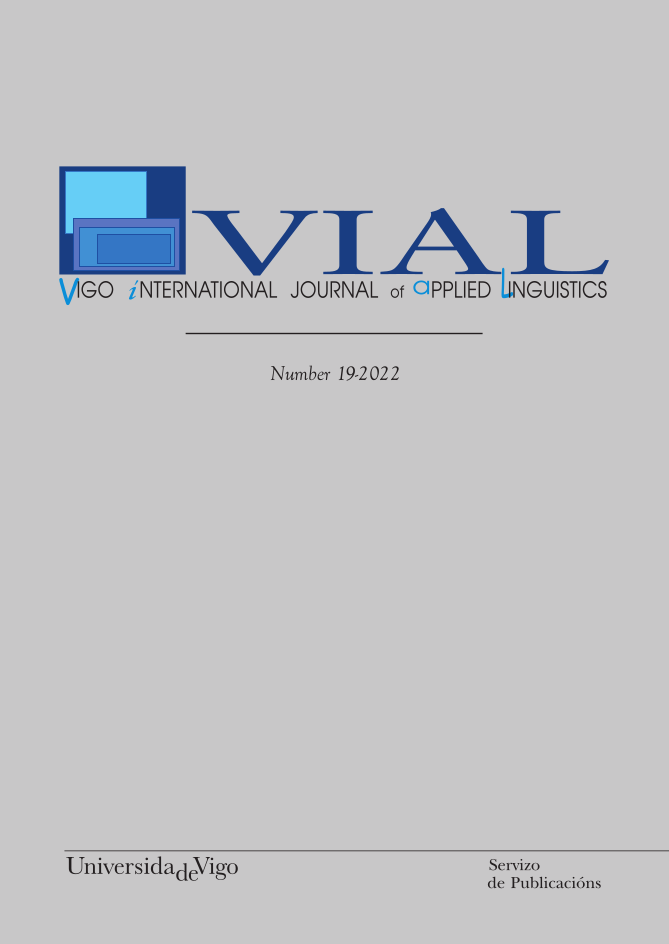U-shaped trajectories in an L2 context: Evidence from the acquisition of verb morphology
DOI:
https://doi.org/10.35869/vial.v0i19.3764Palabras clave:
U-Shaped learning, irregular verb morphology, English, Norwegian, Second Language AcquisitionResumo
This study explores U-shaped behaviour in the acquisition of irregular verb morphology across three groups of Norwegian L2 learners of English. This phenomenon is especially interesting due to its significance for the organization and division between the mental lexicon and grammar. We hypothesized that if U-shaped behaviour was observable, then we would find significant differences in participants’ performance accuracy levels in conjunction with overregularization errors. We report results on the acquisition of irregular verb morphology, in addition to mean reaction times on different types of responses (accurate responses and overregularized ones). The final analysis includes data from participants from the 8 th grade (N=17), 9 th grade (N=19), and 10 th grade (N=15). We report results of the acquisition of irregular verbs, in addition to reaction latencies. Participants responded to an elicitation task to test performance on 40 items. The results are consistent with the later stages of U-shaped learning. We found an increase in overall accuracy co-occurring with a decrease in overregularization errors. We propose that the existence of U-shaped behaviour in the L2 is indicative of a general underlying input-driven learning pattern, and that this process is an integral part of acquiring knowledge upon exposure to irregularities in a productive paradigm.
Descargas
Descargas
Publicada
Número
Sección
Licenza
Libros UVigo é o portal de publicación en acceso aberto das revistas da Universidade de Vigo. A posta a disposición e comunicación pública das obras no portal efectúase baixo licenzas Creative Commons (CC).
Para cuestións de responsabilidades, propiedade intelectual e protección de datos consulte o aviso legal da Universidade de Vigo.



